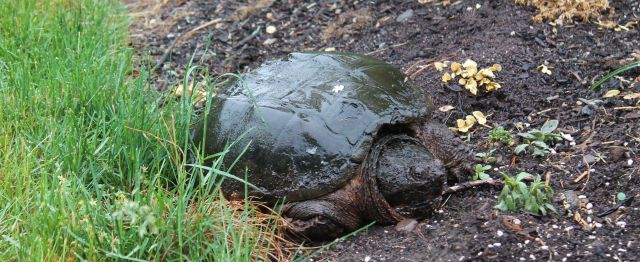
Greetings–
It’s late spring here in New England, and that means one thing: an invasion of snapping turtles, in search of a place to lay their eggs. Here’s a story I told two years ago about learning to love my monstrous neighbors.
If you are in Austin, or if you’ll be there for the Society for the Study of Evolution meeting, please join me on June 17 for a public lecture, “The Surviving Branch: How Genomes Are Revealing The Twisted Course of Human Evolution.” Details here Continue reading “Friday’s Elk, June 3, 2016”
